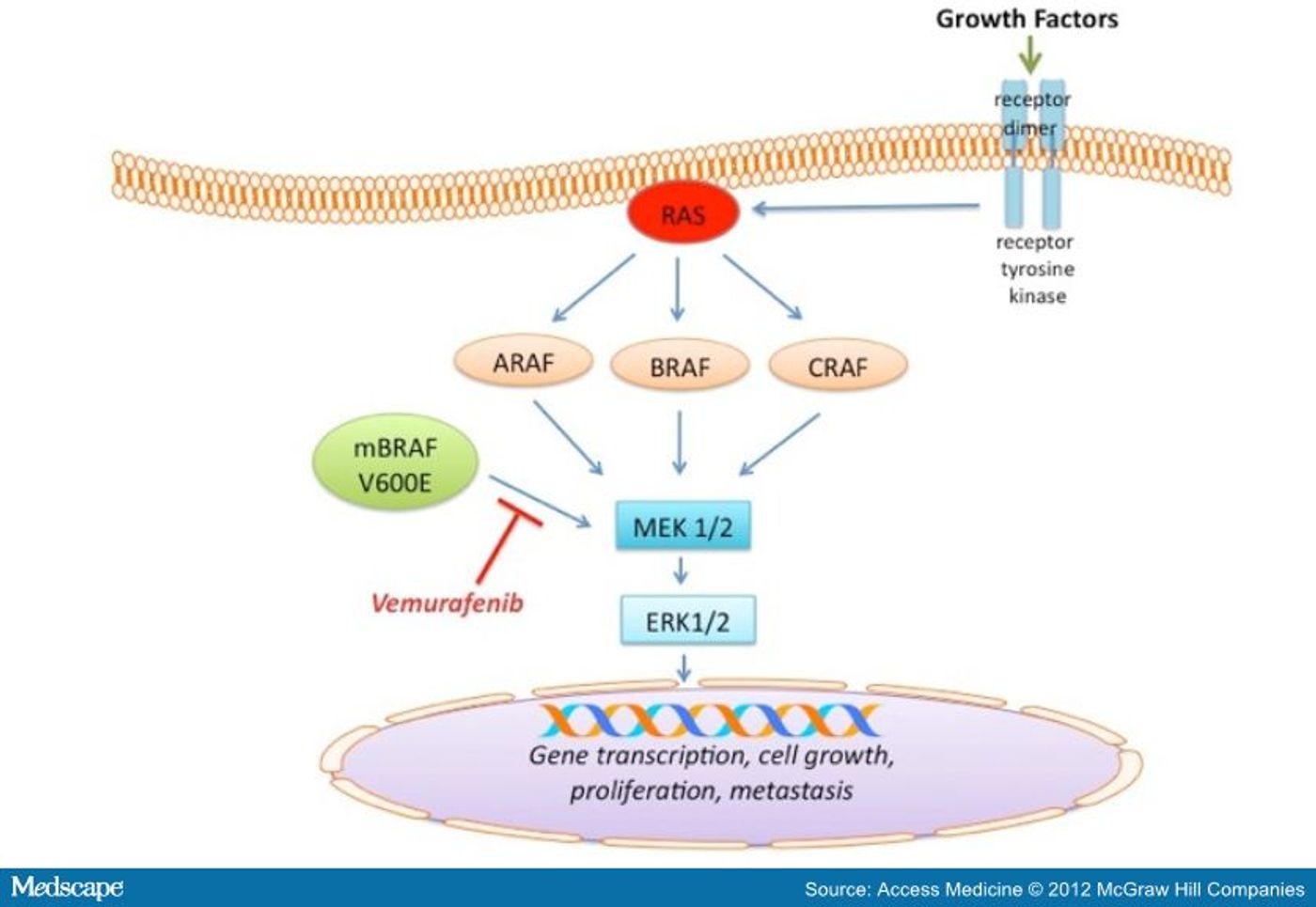Many adults have moles, benign tumors on the skin. A mutation in the BRAF gene makes them grow and become cancerous.

Now researchers at the University of Pennsylvania’s Perelman School of Medicine have identified a major genetic factor that keeps moles in their usual non-cancerous, no-growth state. They published the results of the study online in the journal Cancer Discovery (https://www.uphs.upenn.edu/news/News_Releases/2015/08/ridky/).
As senior author Todd W. Ridky, M.D., Ph.D., an assistant professor of Dermatology at Penn, explained, “The BRAF mutation that stimulates the initial growth of moles also stimulates the production of a tumor suppressor protein, p15, which ultimately acts as a powerful brake on further cell division. It’s this cell division that ultimately allows the transition from a normal mole into melanoma. When mole cells lose the p15 brake, cells can start dividing again and can progress into cancer.”
According to the National Library of Medicine at the National Institutes of Health, the BRAF gene provides instructions for making a protein to help transmit chemical signals from outside the cell to the nucleus. This protein is part of a signaling pathway that controls several important cell functions: the growth and division of cells, the process by which cells mature to carry out specific functions, cell movement and the self-destruction of cells. Chemical signaling through this pathway is essential for normal development before birth. The BRAF gene belongs to a class of genes known as oncogenes that can cause normal cells to become cancerous when mutated (https://ghr.nlm.nih.gov/gene/BRAF).
Both moles and melanomas originate from melanin-producing cells (melanocytes) within the skin. The BRAF mutation is responsible for the abnormal melanocyte growth that creates the majority of both benign moles and cancerous melanomas. The mutation keeps BRAF in an “always on” state, constantly promoting cell division.
In moles, cell proliferation stops after the cluster of melanocytes has reached a few millimeters. To find out why, Ridky and colleagues studied mole cells isolated directly from normal benign moles removed from patients, and compared them to melanocytes isolated from normal (non-mole) skin. The mole melanocytes had 140 times more of the p15 protein than the normal skin melanocytes.
Ridky believes that p15’s importance has been ignored, because many researchers thought that a different, but related, tumor suppressor protein, p16, was the main inhibitor of mole growth. The gene for p16 resembles p15 in the nuclear DNA. It is present in moles and is lost in melanomas and other cancers. Both tumor suppressors usually work together to keep the brakes on cell proliferation in moles, but Ridky’s team found that p15 has unique functions. Inserting p15 into normal cells stopped proliferation completely, but inserting p16 only slowed down proliferation.
Ridky summarized, “Clearly p15 is doing things that p16 doesn’t, and that’s something that the field has mostly overlooked.” Now the team will see how p15 affects other cancers.









